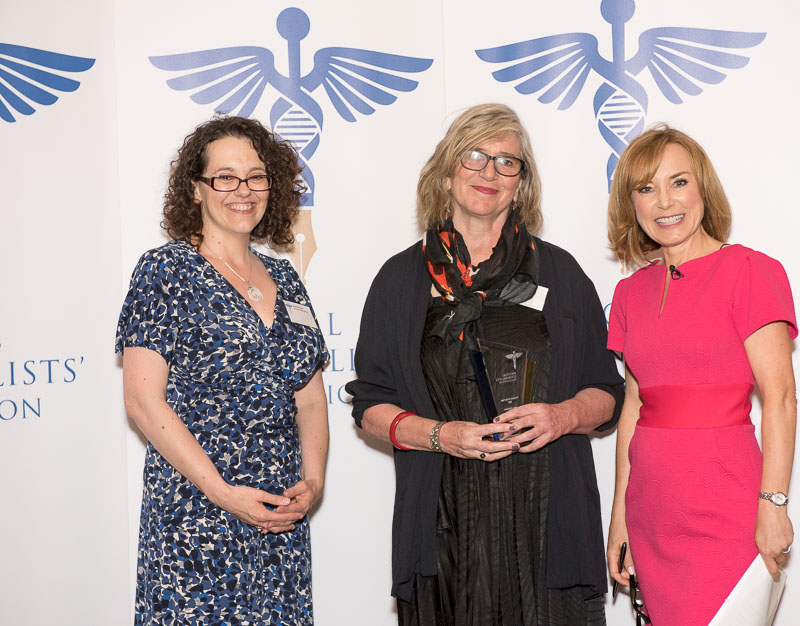Freelancing can be a tough and sometimes lonely existence, but Jane Feinmann, winner of our new Freelance of the Year Award, shows that tenacity and a nose for news can make it an incredibly rewarding and exciting one, too.
Our judges were asked to consider ‘the range of work submitted, ability to adapt to different genres and publications and to look for imaginative and engaging story-telling’.
And their verdict was that Jane’s “engaging journalism” illustrated the ability and skills needed to adapt to very different audiences.
Here, Jane talks us through the three stories which secured her win.
“The Freelance of the Year award required entrants to demonstrate the ability ‘to adapt to different audiences’. It could have been designed for me, that is, someone who has built up commissioning editor contacts over the years and still hungry enough, I guess, to make the effort to pin down the story and sell it in.
“My BMJ piece was a report on the Guild of Health Writer’s ‘Diabetes and Diet’ meeting. Former co-chair, Michele Simmons had invited me to help organise the meeting after my blog* on the subject was shortlisted for the Guild’s awards.
“I chaired the meeting but at the last minute also took notes to ensure coverage of the high-quality panel of speakers debating this crucial issue. With a GP nose, the story walked into the BMJ news pages, a section I’ve written for over several years.
“The Daily Mail spread was one of a number of pieces I’m proud to have contributed to the paper’s Good Health section. The desk commissioned the piece, supplying the hook for a subject I’ve been interested in for years.
“My job was to meet a tight deadline while getting in a face-to-face interview with a recently bereaved widower and attending a lecture on ‘soul midwifery’ at St James’s Piccadilly.
“What won the prize, I think, was the long-form article about healthcare in Mongolia published by Mosaic***.
“I’d been encouraged to pitch ideas to the online open access magazine by a former commissioning editor who had moved to Mosaic on the closure of The Indy in March 2016.
“Around June, she was given responsibility for a group of pieces, commissioned by the Gates Foundation, to test the impact of long-form journalism in spreading innovation in low and middle income countries.
“During the summer, I kept an eye out for suitable ideas – including discussing possible pitches for Mosaic with Sarah Kessler, director of communications at Lifebox, a charity promoting safe global anaesthesia.
“The story gelled only in early September when Sarah attended the World Congress of Anaesthesiologists in Hong Kong and saw a presentation by the Mongolian anaesthetist and academic, Dr Ganbold Lundeg.
“One of his slides was a picture of a Caesarean section, carried out by torchlight in a ‘ger’ in remotest Mongolia where the use of a Lifebox pulse oximeter contributed to saving the life of the nomad mother and baby.
“Mosaic accepted a pitch based around this extraordinary home visit. Within the month, I staggered off the plane at Ulaanbaatar airport conscious that, as that nomad mother and child could not be tracked down, my priority on a week’s trip was to persuade busy Mongolian anaesthetists to help me find a named case study.
“Oh and it had to be someone whose life was saved by emergency surgery, lived in the remote Steppes and, of course, had a fab back story. I needn’t have worried. Mongolian culture
mixes a sense of adventure with limitless empathy and generosity.
“I had all the help I needed and more.”
A version of this feature originally appeared in The Health Writer




Recent Comments